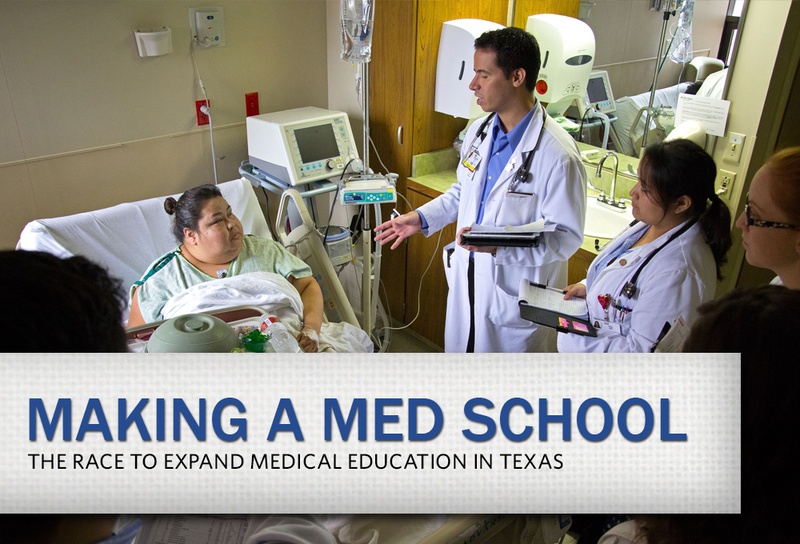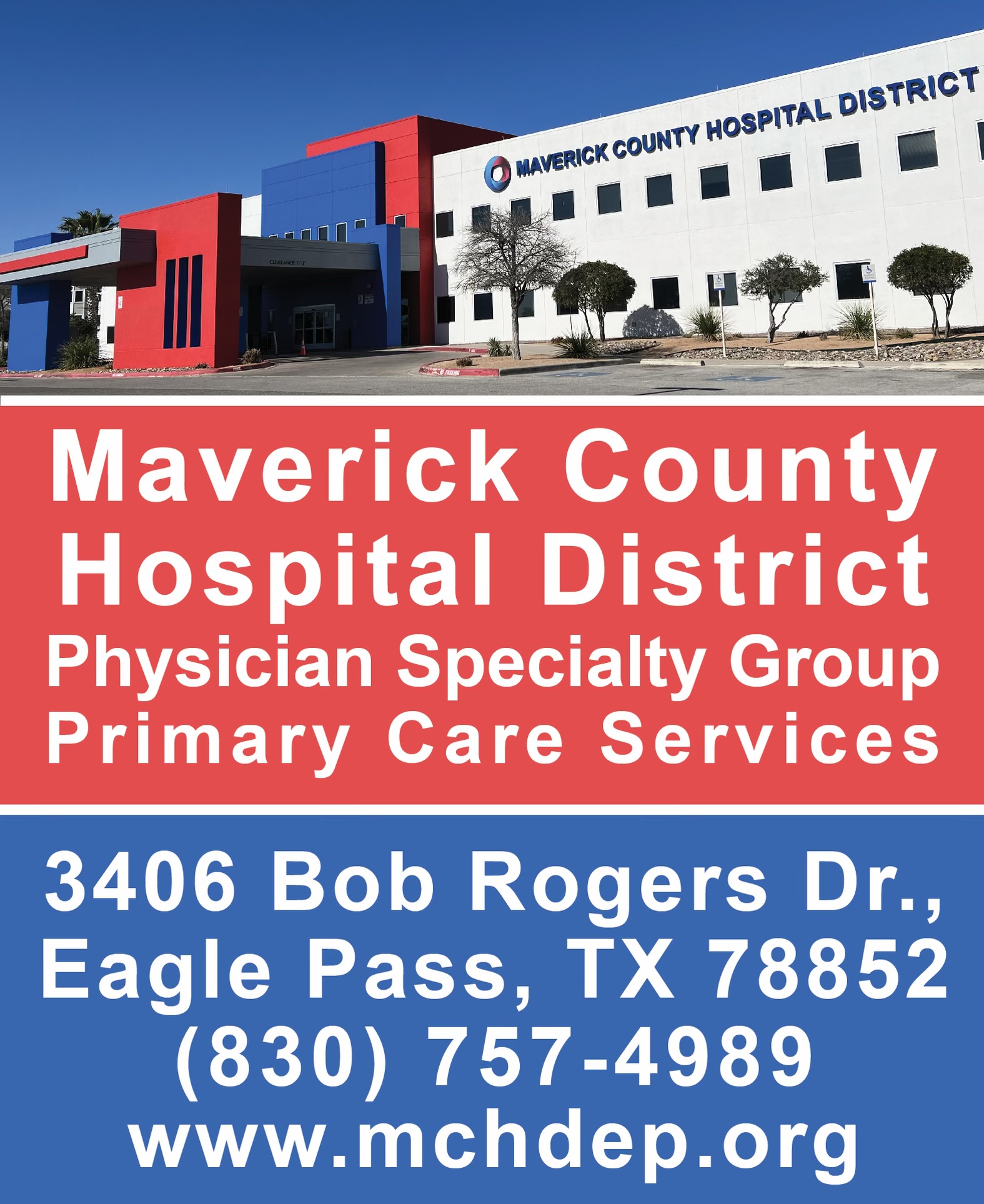For South Texas, No Easy Road to Medical School

By: Emily Ramshaw
When Travis County voters approved a ballot measure this month that paved the way for a new University of Texas medical school in Austin, many South Texans had to stifle the emotions that came most naturally: frustration and resentment. They had been trying for decades to secure financing for a medical school in the Rio Grande Valley, only to watch the deal get sealed first for their wealthier northern neighbor.
Francisco Cigarroa, the chancellor of the University of Texas System, does not share those sentiments. With the wheels greased in Austin, Cigarroa said, he is even more confident that the Rio Grande Valley will get its medical school.
“This only gives me more resolve to get the South Texas school of medicine accomplished,” he said. “We’ve set the pathway for Austin. I’m not giving myself an A on my report card unless I get this done.”
But his commitment is just one piece of the South Texas puzzle. And what worked in Austin — a massive public-private investment, financing set aside by the State Constitution for Texas’ flagship institutions, and a voter-approved 5-cent property tax hike — does not necessarily translate to the Rio Grande Valley.
South Texas health leaders must persuade hospitals to finance 120 residency slots, get local voters in the impoverished region to sign off on a taxing district, and — the toughest but most critical sell — ask the cash-strapped Texas Legislature to provide an additional $20 million a year.
“If you were going to pick a time in the history of the Texas budget to create a new medical school, this is probably not the time you would pick to do it,” said R.K. Whittington, the president of the South Texas Medical Foundation. But with local support for the medical school growing and the economy improving, Whittington said, “I’m more confident now than I was a year ago.”
The need is unquestionably there: the fast-growing Rio Grande Valley, whose population is approaching 1.5 million, has 110 doctors per 100,000 people, studies show — half the national rate, and well below the state average. And the existing physicians are aging; at Doctors Hospital at Renaissance in Edinburg, which, along with other regional hospitals, would be a hub for medical residents under the South Texas plan, 38 percent of physicians will approach retirement within the next 5 to 10 years.
“We have many young people that forgo their plans, their dreams of becoming physicians, because it’s a major sacrifice to leave the area,” said Dr. Leonel Vela, the South Texas regional dean for the UT Health Science Center at San Antonio. Roughly 80 percent of all Texas medical school graduates stay and practice in the communities where they perform their residencies, but UT has just 33 medical residency slots in the Valley.
When it comes to UT’s longstanding pledge to establish a medical school in South Texas, local confidence has not always been in high supply. The first bill to establish a South Texas medical school was introduced in the Legislature in the 1940s, Whittington said. And serious negotiations — spurred by a severe physician shortage in the region, and an underserved population plagued by health epidemics — date back more than 20 years.
“We’re the part of the state everyone ignores — we basically get whatever’s left over,” said Alonzo Cantu, a Rio Grande Valley developer and the founder of Doctors Hospital at Renaissance. “There’s a lot of frustration, a lot of, ‘Why them and not us?’”
In the last decade, the UT system has made progress in South Texas; it established regional academic health centers in Harlingen and Edinburg — precursors to a stand-alone medical school — invested nearly $110 million in medical education infrastructure, and has so far provided clinical rotations for more than 1,000 medical students affiliated with the UT Health Science Center in San Antonio, though the vast majority must leave the Rio Grande Valley to complete their residencies.
But in South Texas, where there are fewer options for creative financing and a relatively weak tax base, state and university system dollars have been considered crucial to completing the plan.
In 2009, lawmakers passed legislation authorizing the establishment of a South Texas medical school, but did not attach any financing to it. Then last spring, the UT System Board of Regents approved spending $30 million a year — special financing set aside for Texas’ flagship institutions — to help establish an Austin medical school. At the same meeting, regents reaffirmed their commitment to transitioning South Texas’ regional health centers into a freestanding medical school, but without additional spending.
For some South Texas leaders, the side-by-side resolutions amounted to a kick in the teeth.
“For a long time, we felt we were first in line for the next medical school,” said Sen. Juan “Chuy” Hinojosa, D-McAllen. “But the Board of Regents was bending over backwards to create a new medical school in Austin, and we felt like the bride left at the altar.”
By mid-August, some frustrated local leaders and hospital executives were in College Station, discussing a possible South Texas medical school with John Sharp, the chancellor of the Texas A&M University System. Days after those conversations began, Cigarroa was in Edinburg, laying out a formal blueprint to graduate South Texas’ first class of medical students by 2018.
Local leaders say that since then, most of the momentum has gelled behind the UT plan. “I think they recognize that this is probably the train that is leaving the station,” Whittington said.
And though Sharp declined to say whether conversations about an A&M medical school in South Texas were proceeding, he said A&M officials simply want to be sure the region is “given the respect and service to its citizens that its people deserve.”
Added Cantu: “If a medical school is built down here, I think John Sharp had a lot to do with it.”
Cigarroa said the South Texas medical school plan never took a back seat to the Austin plan, as evidenced by the UT System’s decade of financial investment in the region. It would be a mistake for the Valley to start splitting its medical school allegiances, he said.
“It’s critically important that we’re all in,” he said. “If we start dividing and diluting South Texas into various university systems, I’m not sure the Valley would get the full benefit.”
He and other university leaders stress that there is no one-size-fits-all financing formula for medical schools. While a taxing district is always a tough sell, Cigarroa said, if South Texans see real progress — like local hospitals expanding residency programs and more medical students treating patients in the Valley — they will be more likely to support one.
He is also confident lawmakers will come through with financing; both Gov. Rick Perry and House Speaker Joe Straus endorse expanding access to medical education in South Texas in theory, though they would not speak to specific budget appropriations.
But Hinojosa, the vice chairman of the Senate’s budget-writing committee, is not convinced. “To commit to $20 million a year under these economic circumstances and with the makeup of the Texas Legislature at this point is not very realistic,” he said.
Reprinted by permission of The Texas Tribune.





